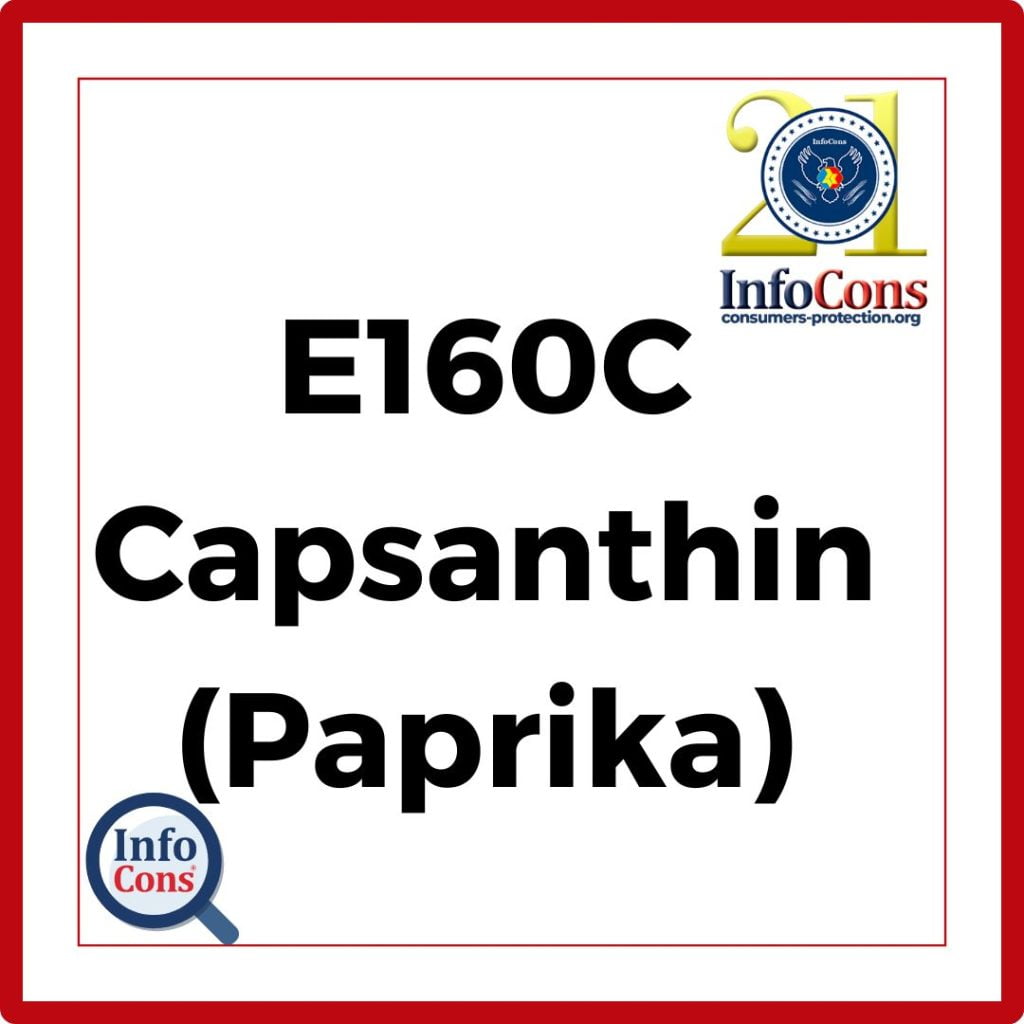
What is Food Additive E160C ?
E160C, also known as capsanthin, is a natural food additive from the category of natural colorants, derived from various species in the Capsicum family (red peppers).
It has gained significant attention for its applications in food coloring and nutritional benefits, given that it is a natural colorant. Capsanthin is a subclass of carotenoids. Its molecular formula is C40H58O3, characterized by an intense red color.
Read also – E160B Annatto
What is the recommended daily intake of E160C ?
E160C is generally recognized as safe by regulatory bodies such as the European Food Safety Authority (EFSA).
The maximum allowable dose has been set at 24 mg/kg body weight/day.
It is approved for use in food and cosmetic products within specified limits for consumer safety. However, it is important to adhere to recommended usage levels to avoid potential adverse effects.
Read also – E151 – Brilliant Black BN
In which foods is the food additive E160C found?
Capsanthin, or E160C, is widely used in the food industry as a natural red colorant.
It is used in products such as:
- Processed meats – Spices like paprika often contain E160C, giving the characteristic red color to sausages, chips, and salsas.
- Dairy products and cheeses, such as cheddar
- Beverages and confectionery products
- Tomato sauces, salsas, and even some ketchups may use E160C to enhance color.
E160C is stable to heat and light, making it an ideal choice for a variety of foods.
In the cosmetic industry, capsanthin is used as a natural pigment in lipsticks, blushes, and other makeup products. Its vibrant color and natural origin make it an alternative to synthetic dyes.
E160C is also used in pharmaceutical products for its antioxidant properties, which can help in formulating supplements.
Read also – How to Choose Fruits and Vegetables at the Store
Contraindications and Risks
Although E160C is generally safe for most people, there are a few contraindications:
- High doses may irritate: Consuming very large amounts of E160C can irritate the stomach.
- Consult with your doctor: If you are taking medications or supplements, consult your doctor before taking concentrated capsanthin supplements.
- Low bioavailability: E160C has low bioavailability, meaning the body has difficulty absorbing capsanthin, so it passes through the digestive system with minimal impact.
- No genotoxic or carcinogenic potential: Studies have shown no evidence that E160C has genotoxic properties.
Conclusions
Although substantial progress has been made in the area of food additives, the controversy surrounding some of them has encouraged research into safer and healthier alternatives. These additives can come from natural sources, like E160C, and offer numerous health benefits, beyond serving purposes such as coloring or preservation.
Capsanthin, or E160C, is a versatile natural colorant with a wide range of applications in the food, cosmetic, and pharmaceutical industries. Beyond its role as a colorant, capsanthin offers significant health benefits, making it a valuable colorant for various products.
As consumer demand for natural ingredients continues to grow, E160C plays an increasingly important role in both the food and health sectors.
Look for products with the cleanest labels possible or that use natural additives. By installing the InfoCons app and scanning the barcodes of food products, you can find out the number and type of food additives in the application.
Author – Cosmina Nițu
Master in Nutrition – Infant and new born nutrition
Sources:
https://www.efsa.europa.eu/ – European Food Safety Authority (EFSA)
https://pubs.acs.org/ – ACS Publications
https://apps.who.int/- World Health Organization
InfoCons – European Organization for Consumers Protection and Promotion of Programs and Strategies , a full member of the World Organization Consumers International, founding member of the Federation of Consumer Associations, and member of ANEC.